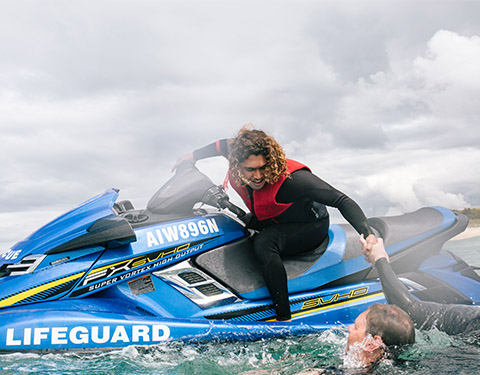Stay safe at our beaches
- Published Date
- 02/01/2019
- News Topic
- Beaches & Lifeguards

Randwick City Council is lucky enough to be home to some of Sydney’s best beaches. Yet along with water comes the need for water safety. The recent drowning of a 34-year-old man at Clovelly beach on New Year’s Day was a stark reminder that we all need to be careful when at the beach. In fact, drowning deaths were up 40 percent for the month of December 2018 than December 2017. With this in mind, we thought it worthwhile to review the best ways to stay safe at the beach.
Assess before you dive in
We know it’s tempting – the water beckons and you just want to dive right in. It’s important that every member of the family learns to stop and watch the waves for a number of minutes before going for a splash. Take time to see which way the tide is going, if people are drifting one way or another, and always pay attention to the signage.
Go between the flags
Lifeguards use their familiarity with the beach and knowledge of the waves to choose the best place to place the flags. Always swim between the red and yellow flags – it’s the safest place and it’s where the water is most closely patrolled.
Always swim with a mate
If you’re not a confident swimmer (or even if you are), it’s wise to swim with a friend. Keep an eye on each other and check in regularly to ensure you know where each other is. This is especially important when snorkelling, when your head could be down and you easily lose track of where you are.
Don’t try to save others if you’re not a strong swimmer
Rescue altruism is the instinct to save the life of someone who might be drowning. Yet if undertaken by a weak swimmer, it can result in putting more people at risk. Rather than jump in and risk your safety and the safety of the people that need rescuing, the best idea is to get help – either in the form of a lifeguard or by throwing a flotation device. Thinking clearly in a moment of stress can be difficult, but by slowing your response and looking for help the end result can be much happier for all of those involved.
Be extra cautious
If you’re not sure of the body of water you’re swimming in, or you’re not a confident swimmer, it’s best to take steps to be extra cautious. For instance – children may be safer if they wear a flotation device, even if they can swim. This will help to keep them safe in a busy pool, lake or beach. It’s also wise to stay near the edge of the water to splash, rather than venturing too far from shore – try to stay in an area where you can stand up. And finally, hold a flotation device– such as a swimming noodle or boogie board – but don’t go too deep.
Pay attention to signage
Look for signs that inform you of rips, blue bottles, or underwater rocks and tides and always heed their advice. Always swim between the red and yellow flags. If there are no flags the beach is closed or unpatrolled and you should not swim.
Don’t swim when…
If you’ve been drinking alcohol or you’ve had a heavy meal, it’s wise not to swim. Stay safe on the shore.
Raise your hand
If you do get stuck or you’re worried you’ve drifted too far out, don’t hesitate to raise your hand and a lifeguard will come to your rescue. Don’t struggle to swim – you may become exhausted and that’s when drownings can happen – just float until help arrives.
It’s important to understand that each beach is unique. Here, our lifeguards explain the unique aspects of three of our most popular beaches.
Coogee Beach
Clovelly Beach
Maroubra Beach
